Extreme adventurers rely on specialized gear to conquer unpredictable environments. From weatherproof clothing to life-saving navigation tools, the right equipment ensures safety and success in the wild.
Venturing into extreme environments—whether scaling mountains, traversing deserts, or trekking through dense forests—requires meticulous preparation. Gear selection often makes the difference between a triumphant expedition and a perilous ordeal. Extreme adventurers face relentless weather, rugged terrain, and unforeseen emergencies, making investing in durable, versatile, and reliable equipment critical.
This guide covers the essentials, from protective clothing to life-saving tools, ensuring you’re equipped for whatever nature throws your way. Forget flimsy gear; here, functionality and resilience take priority.
1- Weather warfare: Essential clothing systems
When facing nature's wrath, your clothing is your first shield. Extreme conditions demand technical fabrics and smart layering systems that adapt to changing environments while protecting you from the elements.
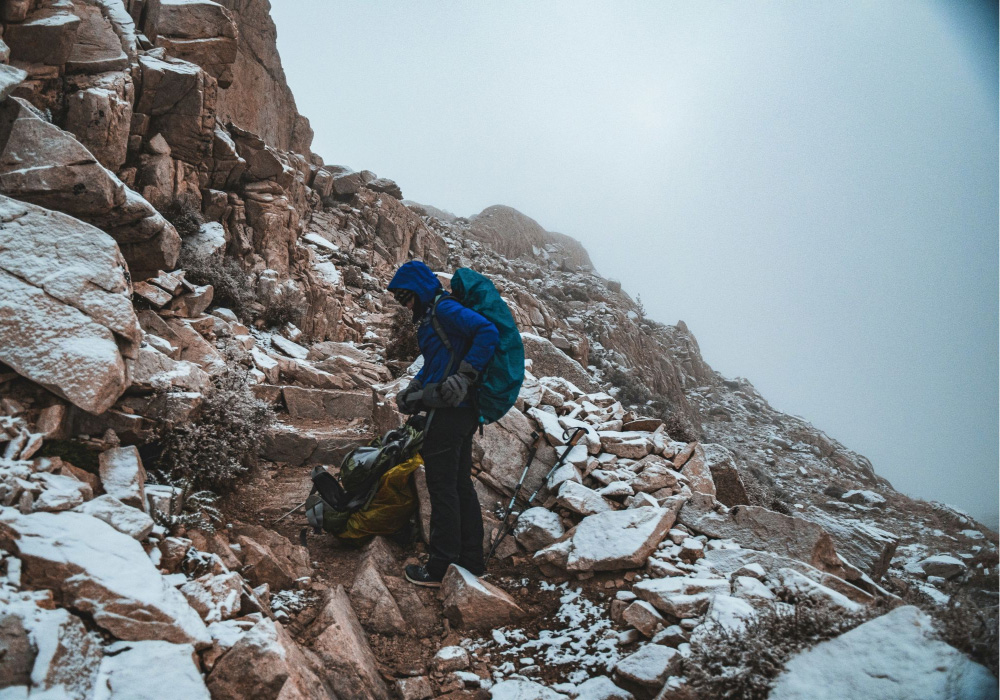
Weatherproof jackets
A high-performance jacket is your mobile fortress against wind, rain, and snow. Choose one that offers waterproofing, wind protection, breathability, and durability. Adjustable hoods and taped seams further enhance protection.
Today's best options combine cutting-edge materials with intelligent design:
- Gore-Tex Pro Shell: The gold standard for waterproof/breathable protection
- Pit zips: Critical for ventilation during strenuous climbs
- Articulated sleeves: Allows full range of motion for scrambling
- Recco reflector: Built-in avalanche rescue technology
Top jacket comparison:
| Model | Weight | Waterproof Rating | Key Features | Best For |
|---|---|---|---|---|
| Arc'teryx Alpha SV | 17 oz | 28,000mm | Most durable, helmet-compatible | Alpine climbing |
| Patagonia Storm10 | 12 oz | 20,000mm | Recycled materials, packable | Fast & light missions |
| Mountain Hardwear Exposure/2 | 15 oz | 20,000mm | Stretch panels, budget-friendly | All-around use |
Moisture-wicking layers
Base layers made from polyester, merino wool, and nylon keep sweat away from your skin and regulate body temperature. They dry quickly, resist odour, and add minimal bulk—perfect for layering. Here are some key characteristics of moisture-wicking layers:
- Quick-drying: Dries rapidly to keep you comfortable.
- Breathable: Allows air to circulate, preventing overheating.
- Lightweight: Easy to pack and wear without adding bulk.
- Odor-resistant: Minimizes odors from sweat, keeping you fresh.
Common materials for moisture-wicking layers include polyester, merino wool, and nylon. Each material has its advantages:
| Material | Advantages | Best uses |
|---|---|---|
| Polyester | Quick-drying, lightweight, affordable | Hiking, running, general use |
| Merino wool | Odor-resistant, temperature-regulating, soft | Cold weather, multi-day trips |
| Nylon | Durable, stretchy, lightweight | Climbing, intense activities |
Brands like Patagonia, Icebreaker, and Under Armour offer excellent moisture-wicking layers. Investing in quality moisture-wicking clothing ensures you stay comfortable and dry during your adventures.
2- Footwear that won't fail you
Your feet are your most valuable asset in the wild—treat them like the precision instruments they are. The right footwear doesn't just protect you from the elements; it enhances your performance, prevents injuries, and can make the difference between an epic summit push and a painful retreat. Let's break down the science of adventure footwear.
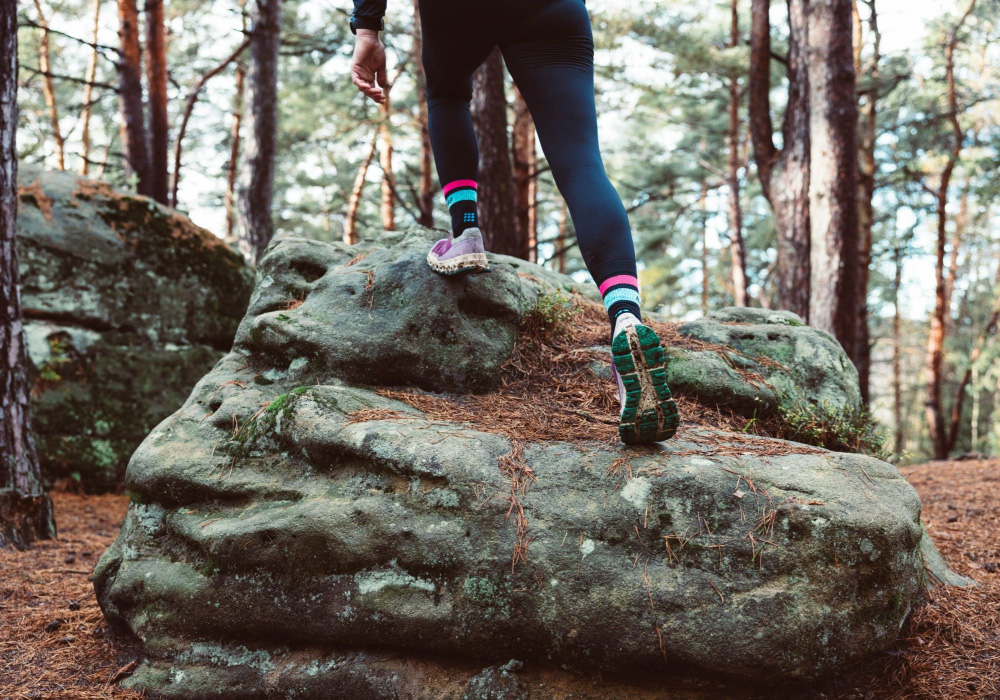
Hiking boots
For technical terrain and heavy loads, a quality boot is your foundation. Modern hiking boots combine space-age materials with biomechanical engineering:
Key features to demand:
- Ankle support: Look for 4-6" cuff height with stiffened collars
- Waterproofing: Gore-Tex or eVent membranes for all-day dryness
- Traction: Vibram Megagrip soles with 5mm+ lugs for loose terrain
- Protection: Rubber toe caps and heel brakes for scrambling
Terrain-specific recommendations:
| Terrain Type | Ideal Boot Characteristics | Top Pick |
|---|---|---|
| Rocky Alpine | Stiff sole (for crampons) | Scarpa Mont Blanc Pro |
| Wet/Tropical | Quick-drying, ventilated | Salomon Quest 4 GTX |
| Desert | Sand-resistant, breathable | Merrell Moab 3 Vent |
Trail runners
When speed and agility matter more than brute-force protection, trail runners are the adventure footwear of choice. These high-performance shoes combine athletic responsiveness with rugged outdoor durability, making them perfect for fastpacking, ultralight backpacking, and technical trail running. Unlike traditional hiking boots, they prioritize freedom of movement and breathability—key advantages when covering big miles in variable conditions. Here are some benefits of trail runners:
- Lightweight: Less fatigue over long distances.
- Breathability: Keeps your feet cool and dry.
- Flexibility: Allows for natural foot movement.
- Traction: Suitable for varied terrains.
Match your shoe to both your foot type and primary terrain:
| Model | Weight | Drop | Best For | Key Tech | Terrain Specialization |
|---|---|---|---|---|---|
| Altra Lone Peak 9 | 10.2 oz | 0mm | Wide feet/Natural runners | Gaiter Trap/StoneGuard | Soft trails/Snow |
| Hoka Speedgoat 5 | 9.7 oz | 4mm | Max cushion/Long distance | Meta-Rocker geometry | Rocky/Technical |
| Salomon Sense Ride 5 | 9.8 oz | 8mm | Precision footing | Quicklace system | Mixed terrain |
| La Sportiva Bushido II | 10.6 oz | 6mm | Technical descents | FriXion XT rubber | Scree/Loose rock |
Your footwear choice should mirror your adventure's demands. Test options with your typical pack weight before committing. Remember—the most expensive boots aren't necessarily the best; the right footwear is what disappears beneath you while performing flawlessly mile after grueling mile.
3- Adventure-ready backpacks
In the wild, your backpack isn’t just a bag—it’s your lifeline. Every ounce, strap, and compartment must be engineered to perform under pressure, whether you’re scrambling up a rock face, battling sideways rain, or covering 20-mile days. The right pack becomes an extension of your body, distributing weight intelligently while keeping critical gear seconds away from your grasp.
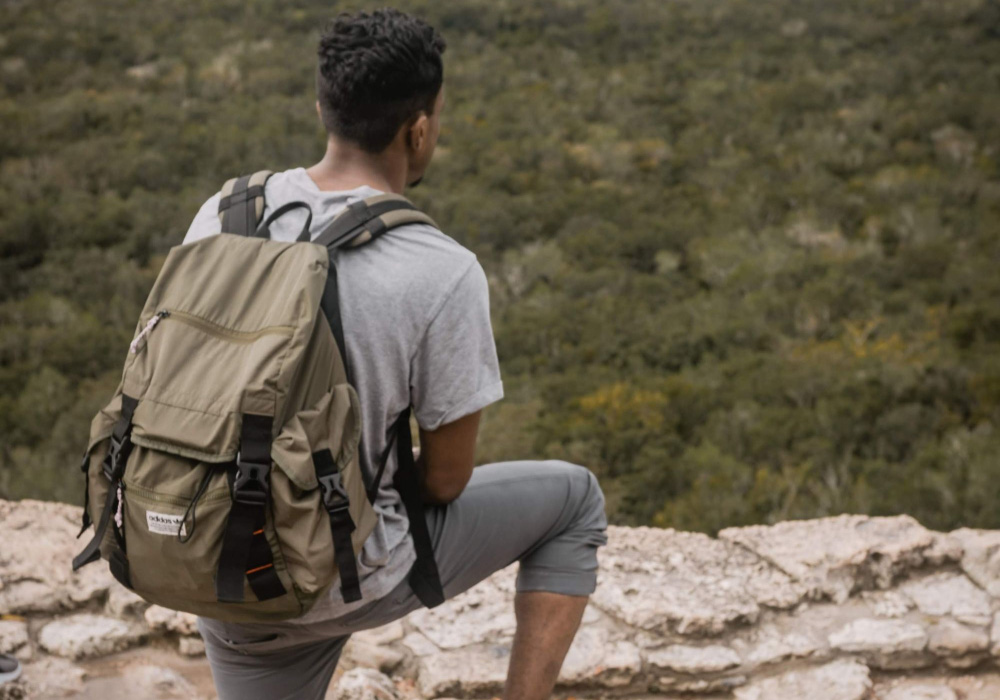
Key features for extreme conditions:
| Challenge | Pack Solution | Example Models |
|---|---|---|
| Avalanche zones | External tool attachments | Osprey Soelden 42 |
| Jungle humidity | Mesh back panel + drainage grommets | Gregory Tetrad 40 |
| Desert treks | Integrated sun hood + insulated bladder sleeve | Matador Freerain22 |
Lightweight daypacks
Great for day trips, these packs are compact yet roomy enough for essentials. Key features include durable materials, padded straps, and multiple compartments. Here are some key features to look for:
- Compact design: A streamlined shape helps you move through dense forests or narrow trails.
- Durable materials: High-quality fabric like ripstop nylon resists tears and abrasions.
- Padded straps: Comfort is crucial during long hikes, so padded shoulder straps are a must.
- Multiple compartments: Keep your gear organized with various pockets and sections.
Consider these top lightweight daypacks:
| Brand | Model | Capacity | Weight |
|---|---|---|---|
| Osprey | Daylite Plus | 20L | 1.19 lbs |
| Deuter | Speed Lite 21 | 21L | 0.94 lbs |
| REI | Flash 18 | 18L | 0.93 lbs |
Hydration packs
Hydration packs include integrated bladders with drinking tubes—perfect for hands-free access to water. They also offer storage for small essentials. Key features include:
- Integrated hydration system: Most packs have a bladder that holds 1-3 litres of water.
- Easy refill design: Quick-access openings make refilling the bladder simple.
- Breathable back panel: Ventilated designs keep your back cool and dry.
- Storage options: Some hydration packs also offer space for snacks, tools, and first-aid kits.
Check out these popular hydration packs:
| Brand | Model | Capacity | Weight |
|---|---|---|---|
| CamelBak | M.U.L.E. Tactical Hydration | 11L | 22.2oz |
| Osprey | Raptor 14 | 14L | |
| Salomon | Trailblazer 20L Hydration Pack | 20L | 15.31oz |
Your ideal pack should disappear when moving yet instantly deliver gear when needed—like a perfectly tuned adventure partner.
4- Navigation: Never lose your way
GPS devices
GPS devices are modern marvels that provide precise location data. They use satellites to give real-time information about your position. They are invaluable for extreme adventurers exploring unfamiliar terrain.
Here are some key features to look for in a GPS device:
- Durability: Ensure the device is rugged and waterproof.
- Battery life: Long battery life is essential for extended trips.
- Mapping features: Look for preloaded maps and the ability to add custom maps.
- User interface: A user-friendly interface can make navigation easier.
Popular GPS devices include Garmin's GPSMAP series and the Suunto Traverse. These devices offer a blend of reliability and advanced features. They are designed to withstand extreme conditions, making them perfect for adventurers.
Here is a quick comparison of some top models:
| Model | Battery Life | Waterproof Rating |
|---|---|---|
| Garmin GPSMAP 66i | 35 hours | IPX7 |
| Suunto Traverse | 100 hours | 30m |
Compasses
Compasses are timeless navigation tools that have guided adventurers for centuries. They are essential for any extreme adventurer's gear list. Compasses do not rely on batteries or satellites, making them incredibly reliable in all conditions.
Key features to consider when choosing a compass:
- Accuracy: Ensure the compass has a high degree of precision.
- Durability: Look for a compass that can withstand harsh environments.
- Ease of use: The compass should be easy to read and use.
- Additional features: Some compasses come with clinometers or sighting mirrors.
Popular compass models include the Suunto MC-2 and the Silva Ranger. These compasses are known for their accuracy and durability. They are designed to perform in extreme conditions, ensuring you never lose your way.
Here is a quick comparison of some top models:
| Model | Weight | Additional features |
|---|---|---|
| Suunto MC-2 | 74g | Clinometer, Sighting Mirror |
| Silva Ranger 2.0 | 132g | Clinometer, Luminous Markings |
5- Shelter solutions
Extreme adventurers need reliable shelter solutions to withstand harsh conditions. Whether you're hiking in the mountains or exploring remote areas, having the right gear is crucial. This section covers the essential shelter solutions, focusing on ultralight tents and sleeping bags. These items ensure you stay safe, warm, and dry during your extreme adventures.
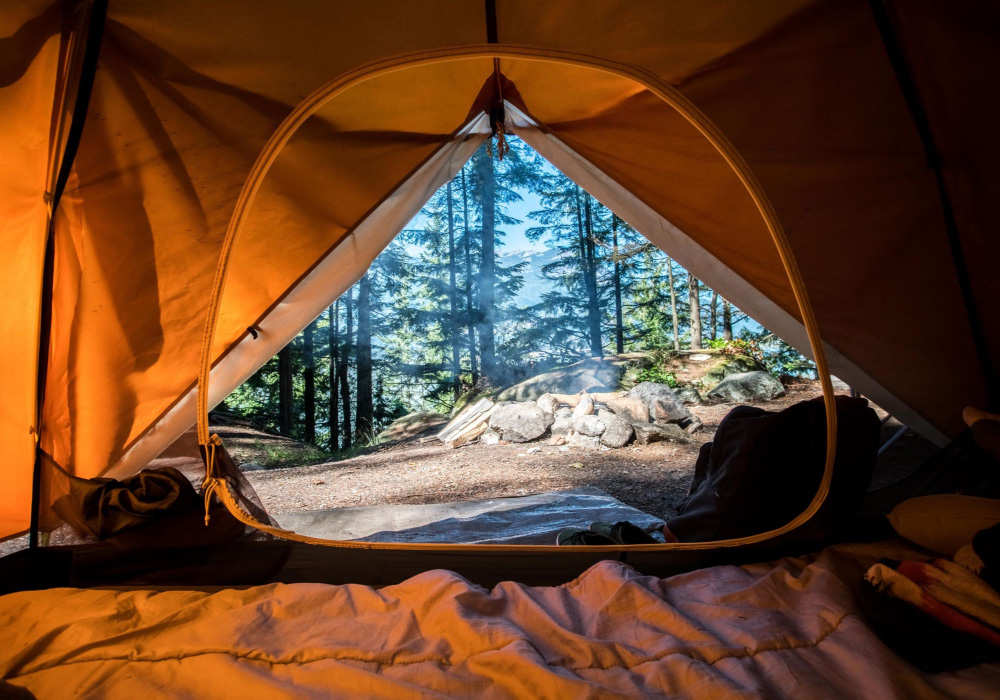
Ultralight tents
Ultralight tents are ideal for extreme adventurers. They are light, compact, and easy to carry. These tents provide excellent protection against weather elements without adding extra weight to your backpack. Here are key features to look for in ultralight tents:
- Weight: Look for tents that weigh less than 3 pounds.
- Material: Choose durable materials like ripstop nylon or polyester.
- Setup: Opt for easy-to-assemble designs.
- Ventilation: Ensure good airflow to reduce condensation.
Here is a comparison table of popular ultralight tents:
| Brand | Weight | Material | Capacity |
|---|---|---|---|
| Zpacks Duplex | 1.19 lbs | Dyneema Composite Fabric | 2-person |
| Big Agnes Fly Creek HV UL2 | 2.06 lbs | Nylon | 2-person |
| MSR Hubba Hubba NX | 3.8 lbs | Nylon | 2-person |
Choosing the right ultralight tent ensures a comfortable and safe shelter, no matter where your adventure takes you.
Sleeping bags
When temperatures plummet, and the wind howls outside your tent, nothing matters more than your sleeping bag. This cocoon of warmth becomes your sanctuary, your recharge station, and sometimes your lifeline in extreme conditions. The difference between shivering through the night and waking up refreshed for another day of adventure comes down to these key considerations:
- Temperature rating: Choose a bag rated for the coldest temperature you expect.
- Weight: Opt for bags that are light but still warm.
- Insulation type: Down insulation is lighter and packs smaller, while synthetic is better in wet conditions.
- Shape: Mummy bags are more efficient at retaining heat.
Here is a comparison table of popular sleeping bags:
| Brand | Temperature rating | Weight | Insulation type |
|---|---|---|---|
| Therm-a-Rest Hyperion 20 | 20°F | 1.5 lbs | Down |
| REI Co-op Magma 15 | 15°F | 1.9 lbs | Down |
| Mountain Hardwear Lamina 15 | 15°F | 3.2 lbs | Synthetic |
Investing in a high-quality sleeping bag ensures you stay warm and comfortable, even in the harshest conditions.
Pro tip: Always pair your bag with an insulated sleeping pad (R-value 4+ for winter) - the ground steals more heat than the air!
6- Fuel your adventures: Essential cooking gear for the wild
When you're miles from civilization, a hot meal becomes more than just comfort—it's energy, morale, and survival. The right cooking equipment transforms basic rations into satisfying feats, powers recovery after gruelling miles, and provides warmth when temperatures plummet. Forget cold trail mix dinners; with these carefully selected tools, you'll eat like a backcountry king while keeping your pack weight in check.
Portable stoves: Your backcountry kitchen
At the heart of any wilderness cooking system, a reliable stove turns raw ingredients into steaming meals. Modern designs balance weight, efficiency, and performance across environments:
Top stove considerations
- Boil time: How quickly it brings water to a rolling boil
- Wind resistance: Stability in gusty conditions
- Fuel efficiency: Burn time per ounce of fuel
- Simmer control: For real cooking beyond just boiling
Best-in-class options
| Model | Type | Weight | Boil Time | Best For |
|---|---|---|---|---|
| MSR PocketRocket 2 | Canister | 2.6 oz | 3.5 min | Fast & light trips |
| Jetboil Flash | Integrated | 13 oz | 2 min | Solo hikers |
| MSR WhisperLite | Liquid fuel | 11 oz | 4 min | Extreme cold/altitude |
Pro tip: Always carry a backup firestarter (like waterproof matches) in case of stove failure—your dinner shouldn't depend on a single piece of gear.
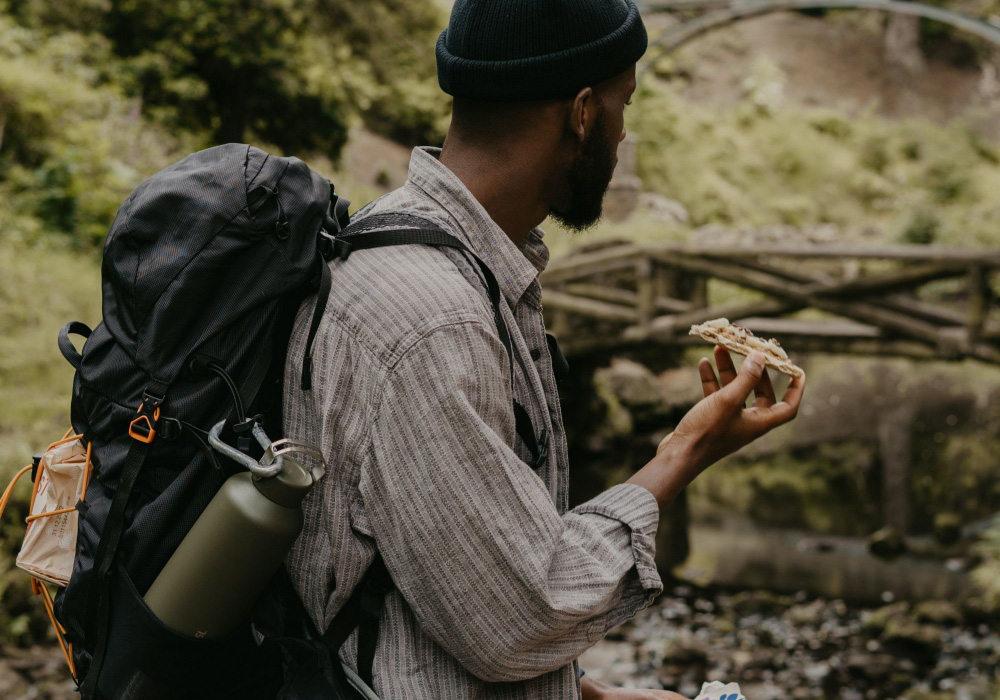
Cookware: More than just a pot
The ideal backcountry kitchen balances functionality with space savings:
- Nesting systems: Pots that pack bowls, cups, and lids together
- Non-stick coatings: For easy cleaning without water waste
- Heat-exchange tech: Specialized pots that boil faster using less fuel
Don't forget: A compact spatula and collapsible measuring cup can elevate your backcountry baking game from basic to gourmet.
The backcountry pantry
Pair your cooking gear with these meal-enhancing essentials:
- Spice kit: Small containers with salt, pepper, and favourite seasonings
- Olive oil flask: Compact way to add calories and flavour
- Dehydrated veggies: Lightweight nutrition boosters
With this cooking setup, you'll transform simple ingredients into backcountry banquets that fuel your adventures and lift your spirits when the trail gets tough. Because in the wild, a hot meal isn't just food—it's fortitude.
7- Lighting essentials
Extreme adventurers need the best gear to survive the wild. Among the top 10 gear essentials, lighting essentials stand out. In the wilderness, reliable lighting can make all the difference. Let's delve into two critical lighting essentials: Headlamps and Portable Lanterns.
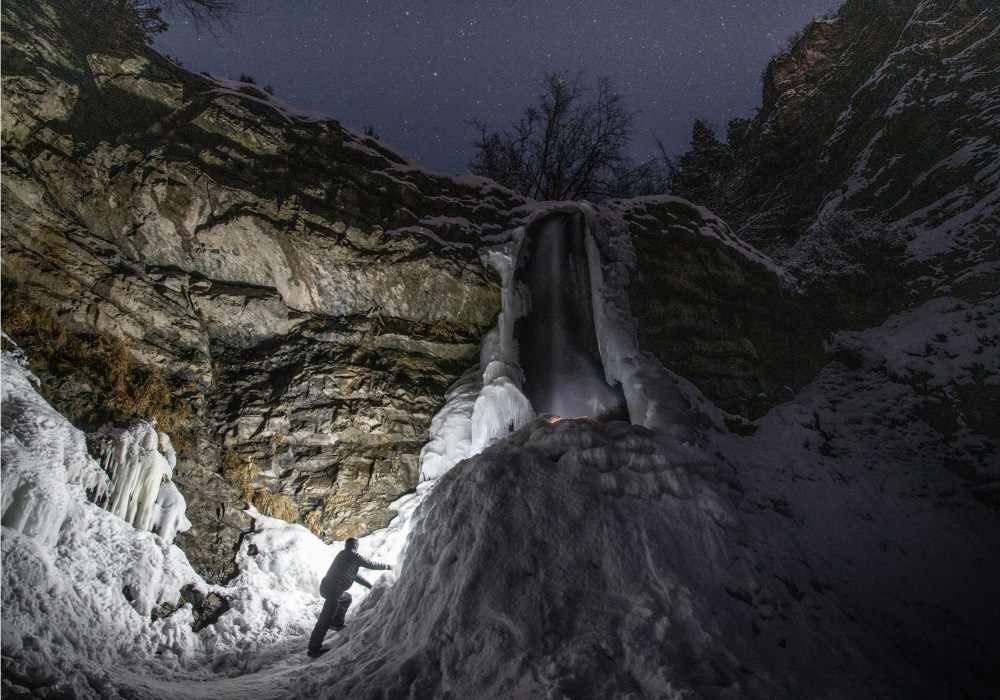
Headlamps
Headlamps are a must-have for any extreme adventurer. They keep your hands free while providing much-needed light. Here’s what makes a headlamp essential:
- Hands-free operation: With a headlamp, both hands remain free. This is crucial for climbing, setting up camp, or navigating tricky terrain.
- Adjustable Beam: Most headlamps have adjustable beams, which allow you to focus light exactly where you need it.
- Lightweight and portable: Headlamps are designed to be lightweight. You can wear them for hours without feeling discomfort.
- Water-resistant: Many headlamps are water-resistant. This is vital for adventurers facing unpredictable weather.
Here’s a comparison of some popular headlamps:
| Brand | Model | Lumens | Battery Life |
|---|---|---|---|
| Petzl | Actik Core | 450 | 7 hours |
| Black Diamond | Spot 350 | 350 | 8 hours |
| Fenix | HL60R | 950 | 10 hours |
Portable lanterns
Portable lanterns are essential for illuminating larger areas. They provide ample light for group activities and camp setups. Here’s why they are crucial:
- Wide area illumination: Lanterns light up wide areas. This is perfect for campsites or group gatherings.
- Multiple light modes: Many lanterns offer multiple light modes. You can adjust brightness to save power or increase visibility.
- Durability: High-quality lanterns are built to last. They are often shock-resistant and weatherproof.
- Rechargeable batteries: Modern lanterns come with rechargeable batteries. This is eco-friendly and convenient for long trips.
Check out these popular portable lanterns:
| Brand | Model | Lumens | Battery Life |
|---|---|---|---|
| Goal Zero | Crush Light | 60 | 35 hours LOW |
| Black Diamond | Moji Lantern | 100 | Up to 100 hours LOW |
| BioLite | AlpenGlow | 500 | Up to 200 hours LOW |
8- Hydration systems
When every calorie and ounce of energy counts, hydration isn't just important—it's your performance currency. The right water system can mean the difference between summit success and dangerous fatigue. Modern hydration solutions go far beyond simple water bottles, incorporating smart engineering to keep you drinking frequently, even when you're pushing your limits.
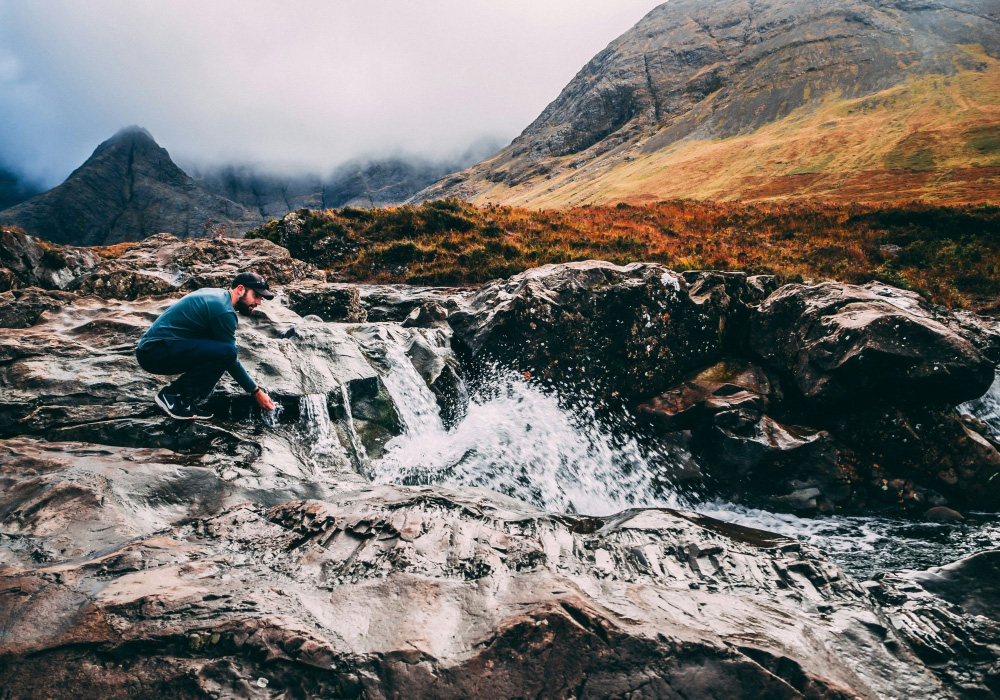
Why your hydration system can't be an afterthought:
- Dehydration impairs decision-making 2x faster than altitude
- Just a 2% fluid loss reduces endurance by 10-20%
- Proper systems prevent the #1 mistake adventurers make: not drinking enough
Water filters
Water filters ensure you have access to clean drinking water, no matter where you are. Contaminated water can lead to serious health issues, so having a reliable water filter is essential. Here are some key features to look for in water filters:
- Portability: Lightweight and easy to carry.
- Efficiency: Filters out bacteria, protozoa, and other contaminants.
- Durability: Built to withstand harsh conditions.
- Ease of use: Simple setup and maintenance.
Below is a table comparing popular water filters:
| Brand | Volume | Filter type | Weight |
|---|---|---|---|
| LifeStraw | 22fl oz | Membrane microfilter, carbon element | 8.7 oz |
| MiniWorks EX Water Filter | Flow: 1L/min | Marathon EX (carbon/ceramic) AirSpring Accumulator (pump) | 1 lb |
| Katadyn Hiker Pro | Flow: 1L/min | Pump-action | 11 oz |
LifeStraw and Sawyer Mini are excellent for their lightweight design. Katadyn Hiker Pro offers a higher capacity, making it suitable for longer expeditions. Choose a water filter that fits your needs and ensures safe drinking water.
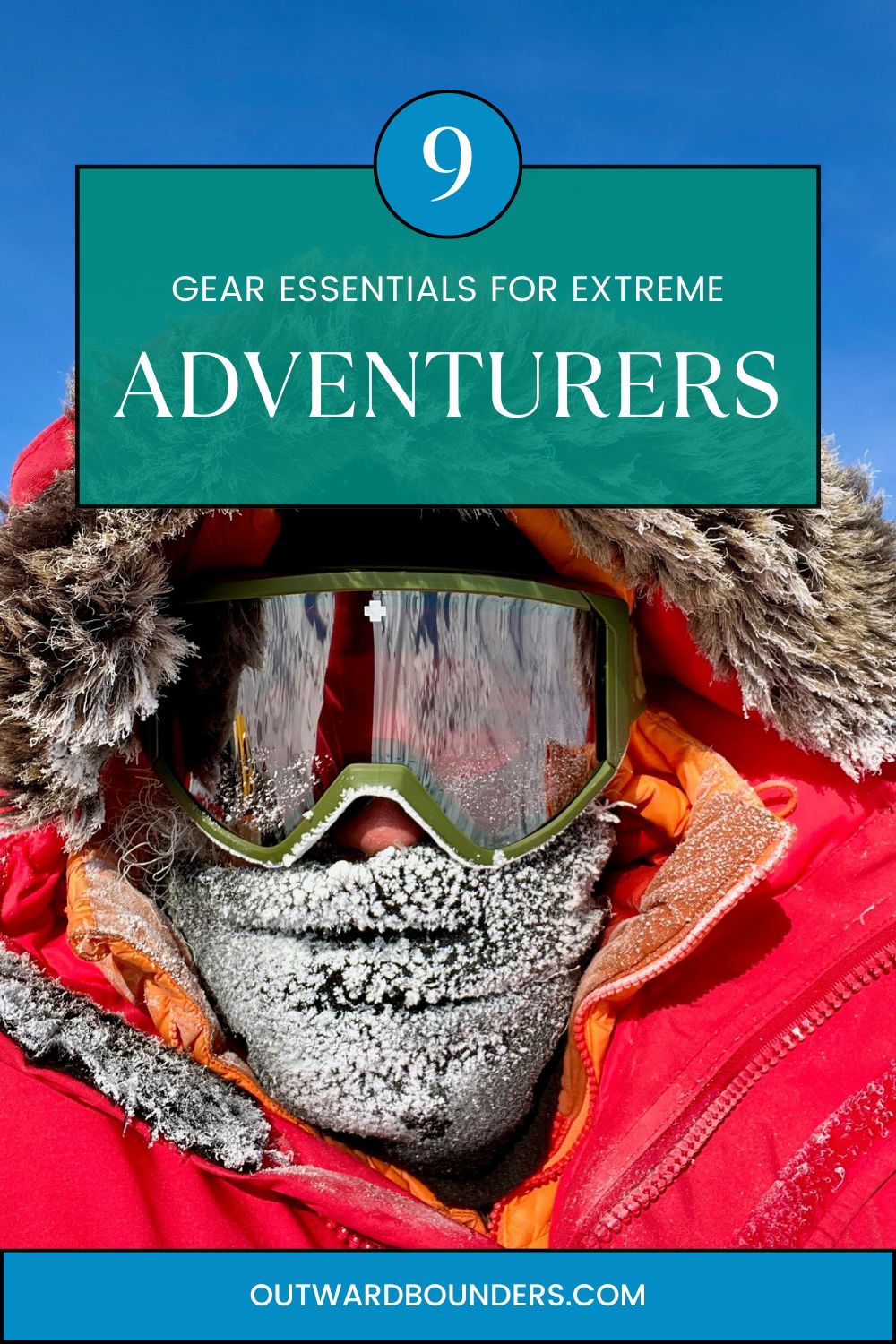
Collapsible water bottles
Collapsible water bottles are perfect for adventurers who need to save space. When empty, they can be folded or rolled up, making them compact and easy to store.
Key benefits of collapsible water bottles include:
- Space-saving: Reduces bulk in your backpack.
- Lightweight: Easy to carry without adding extra weight.
- Durable: Made from tough materials to withstand rough use.
- Reusable: Eco-friendly and cost-effective.
Here are some popular collapsible water bottles:
- Vapur Eclipse: Known for its rugged design and convenient carabiner.
- HydraPak Stash: Features a twist-locking mechanism for easy storage.
- Nomader Collapsible: Includes a leak-proof cap and ergonomic handle.
Vapur Eclipse stands out with its tough build and a handy clip. HydraPak Stash offers a unique twist-lock feature for compact storage. Nomader Collapsible provides a secure, leak-proof experience with added convenience.
Collapsible water bottles are an excellent addition to your hydration system. They offer flexibility, durability, and ease of use, ensuring you stay hydrated without compromising on space.
9- Multi-purpose gear
When every ounce counts and space is limited, multi-purpose gear becomes your secret weapon in the wild. These ingenious tools combine multiple critical functions into single, streamlined solutions that adapt to whatever challenges the wilderness throws your way.
Survival kits
Every extreme adventurer should have a survival kit. These kits pack essential items to handle emergencies, ensuring you stay safe and prepared.
Here are key items typically found in a survival kit:
- First aid supplies: Bandages, antiseptic wipes, and pain relievers.
- Fire starters: Waterproof matches or fire steel.
- Navigation tools: A compass and a map.
- Shelter: An emergency blanket or a small tent.
- Signalling devices: A whistle and a mirror.
Survival kits are compact and lightweight, making them easy to carry. They come in various sizes, from pocket-sized pouches to larger backpacks. Choose one that suits your adventure type.
To help you decide, here’s a table comparing different survival kits:
| Kit Type | Contents | Weight |
|---|---|---|
| Basic | First Aid, Fire Starter, Compass | 0.5 lbs |
| Intermediate | Basic + Emergency Blanket, Whistle | 1 lbs |
| Advanced | Intermediate + Small Tent, Food Rations | 2 lbs |
Paracord
Paracord is a must-have for extreme adventurers. It's a versatile and durable rope that can handle various tasks.
Here are some ways to use paracord:
- Building shelters: Use paracord to tie branches and create a sturdy shelter.
- Repairing gear: Fix broken straps or zippers with paracord.
- Creating traps and snares: Catch food in the wild using paracord traps.
- Making emergency slings: Support an injured arm with a paracord sling.
- Fishing line: Use the inner strands of paracord as a fishing line.
Paracord comes in different lengths and strengths. A standard 550 paracord can hold up to 550 pounds, making it incredibly strong and reliable. Keep a few feet of paracord in your gear for emergencies.
Here’s why paracord is essential:
- Lightweight: Easy to carry without adding bulk.
- Compact: Fits in any backpack or pocket.
- Durable: Resistant to wear and tear.
Overall, paracord is a multipurpose tool that can significantly impact survival situations.
Final thoughts
Extreme adventures demand gear that’s as resilient as the adventurer. Every item—from the jacket that deflects a blizzard to the GPS that pinpoints your location in a whiteout—plays a pivotal role in survival. Prioritize quality, test gear before departure, and tailor your kit to the environment.
The wilderness rewards preparation. With the right equipment, you’ll not only survive but thrive, turning potential hazards into stories of triumph. Now, gear up and push boundaries—safely.


Comments powered by CComment